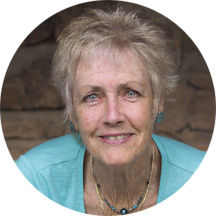I’m walking around, all right. I’m cooking, doing the laundry. Watching TV. Even back to playing live music with Bill (thestorysmusic.com). Just finished the amazing road trip in southern Mexico. But, something’s different.
The last two years have been full of every kind of challenge imaginable, for the whole world. Now we’re settling into the realization that the virus, many viruses, are here to stay. So what’s next?
We should be relieved. And be able to get back to what we were doing before. But for some of us, it’s not that easy. I believe for many the pandemic has created a trauma, “an emotional response to a terrible event.” Now we’re living it.
What we know about people who experience a trauma from a very tangible, visible thing such as car wreck or rape or fire—and survive—is that they can get stuck in it. They may relive the event time after time. They relive the terror. They’re overwhelmed with anxiety, and depression may set it. The loss of control, of being a victim, floods their lives.
But the pandemic we’ve lived through is not the same kind of horribly visible, tangible thing. Yes, we listened to dire reports. We watched the number of dead mount and wondered if we’d be among them. We dealt with guidelines that changed the way we interacted with most other human beings. Even having to cover our mouths for fear of contagion. But in a weird way, we were bystanders to the event—those of us who survived. We should just resume our pre-pandemic lives. Or maybe not.
For me, and others I’ve talked with, there’s a certain kind of lost feeling. A wondering what will happen next. An underlying worry about “next flu season.” A question about how to interact with other people, whether to keep our distance. A vague depression about what’s been lost, what will not return. It’s not just putting our masks away, it’s questioning how life will be now.
Using an approach that’s been helpful with people experiencing trauma from very physical accidents can help us with fallout from the pandemic. With a car wreck victim, for example, we gently take the person back to the events leading up to the wreck and help them face it out loud, supported by the therapist, friends and family.
The next step is vital: asking “Then what happened? and then what happened? and then…?” Because there’s a strange emotional sense that the person who survives in some way doesn’t “realize” it. They’re not mental. They go to hospital, heal up, grieve and go on with their lives. But they may wonder why they’re full of anxiety and dread since it’s all behind them. Asking them to step by step recount the events following the wreck can integrate the visceral sense that they really did survive. “And then you heard the ambulance…and then you heard the responder say, ‘We’ve got you!…and then….”
Obviously, talking with friends and family about how the pandemic has affected you would be helpful. But because the pandemic may not register as being as bad as a car wreck, our trauma may not show up with heavy duty feelings. Maybe more of a vague sense of not knowing what to do now, ambivalence about whether to do something different with our lives, not remembering a lot of things that happened during the two years. All that can create discontent and restlessness in our daily lives now.
So we can ask ourselves what happened after we got the OK to remove our masks. And then what happened? and then what happened? and then? Did we really survive? Do we know full well that we’re still here and ready to decide what to do next?
What I’m hoping for is more clarity about how the pandemic unfolded personally and its effects. Asking what happened next may bring that clarity and the room to go on living a fuller life.
Please feel free to let me know your reactions to this and other postings by clicking on “Contact Nancy.” I appreciate your visit to Our Close Connections.

